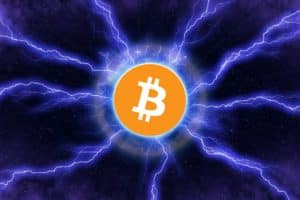Breaking news: node capacity of the Bitcoin Lightning Network reaches a new all-time high at 5,630 BTC.
The USD countervalue, now at $170 million, is also growing steadily, but still far from the ATH of November 2021.
Let’s see what this means for Bitcoin and its infrastructure.
New all-time high for Bitcoin’s Lightning Network capacity
A few hours ago, according to data provided by The Block, the Lightning Network Bitcoin reached a new all-time high for what concerns the capacity of the network’s nodes to handle BTC transactions.
In detail, Bitcoin’s Layer 2 network, used mainly for micropayments, now accommodates 5630 BTC, which corresponds to $170 million.
As of the beginning of the year, this metric has seen a rise of 350 BTC, up 6.6 percentage points.
On the other hand, if we look at the lighting Network’s capacity in dollar countervalue, we find that the increase since 1 January 2023 has been $82 million, but without exceeding the all-time high of 217 million touched on 8 November 2021.
This is because at that time the price of BTC was at its highest levels, so even with a lower capacity in terms of BTC being routed, the USD value handled by lightning nodes was higher.
An increase in total capacity translates into an overall growth of the network, which, although at a slow pace, is getting closer and closer to registering significant numbers.
The network boom will likely occur when Binance successfully integrates the Layer 2 within its platform, paving the way for micro BTC transfers even for newbies.
When this happens, there should likely be an increase in the number of Lightninh nodes and channels, allowing the ecosystem to emerge.
Meanwhile, it remains very interesting to note that the average size of each Lightning channel has also reached an all-time high.
It is worth noting that every time this network is used, a payment channel must be established between two parties, which enables the exchange of Bitcoin.
The average size handled by each link between two Lightning participants came in at 0.0755 BTC, equivalent to $2289.
Although the Lightning Network still remains an infrastructure used to transfer small amounts of money, it is slowly expanding to orders of magnitude never before seen.
Bitcoin’s Layer 2 is more convenient than Visa and Mastercard
The Lightning Network represents an extraordinary technology applied to the cornerstone principles of the Bitcoin protocol.
The Layer 2, which leverages off-chain computation work, manages to provide greater scalability than the core infrastructure with very low fee costs.
The Bitcoin mainnet itself is already a cheap payment solution when it comes to large amounts of money when compared to traditional payment providers.
However, in the case of small transactions, the layer 1 of Bitcoin is still too slow and expensive, unusable for everyday life.
The Lightning Network solves these problems by offering a network that inherits the security of the main substrate by proposing fees close to zero and instantaneous operations.
The developers who introduced this technology to the world of Bitcoin in 2015, namely Thaddeus Dryja and Joseph Poon, have even speculated that the network will surpass Visa and Mastercard in the number of transactions per second (tp/s) that can be processed.
Currently we are still far from this result, but we can already observe a convenience on the commission side in the use of the Lightning Network compared to traditional payment providers.
At present, 3,000 satoshis are paid for each BTC exchanged on the Lightning Network, therefore, for approximately every 30,000 thousand dollars, there are fees of 0.91 dollars, which in percentage terms roughly corresponds to a commission of 0.003%.
Visa and Mastercard in comparison, although they represent extremely more efficient and reliable choices than the decentralized counterpart, they apply fixed interbank commissions higher than 1% more than the variable quotas based on the amount transferred.
It is evident that, if in the future the capacity of the Lightning Network were to rise to such an extent as to compete with the Fiat payment companies, there would be no more competition.
The road is still very long, but the climb begins to become parabolic.
Enjoy the journey!


